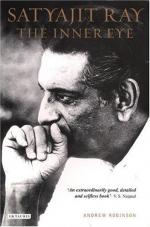|
This section contains 194 words (approx. 1 page at 300 words per page) |

|
It is in Charulata that both the statement and the art reach their height. For the first time since the trilogy, Ray has something different and important to say, and says it really well. It is, to me, his masterpiece since the trilogy. In a classically Indian fusion of decoration and expression, its miniature-painting-like images acquire an autonomy and poise. Its rhythm, gentle as in all Ray's films, never falters, and Ray's own musical score, competent and interesting in previous films, for the first time becomes a major instrument in making the statement of his film. (p. 44)
The exquisite period flavor is Ray's own, and distinguishes the film from the story, in which Tagore takes it for granted. The sunlit garden, the swing, he embroidery, the floral motifs on the doors and the walls, the horse-drawn carriage, the evocative settings … are, however, more than exquisite decorations; they frame...
|
This section contains 194 words (approx. 1 page at 300 words per page) |

|


